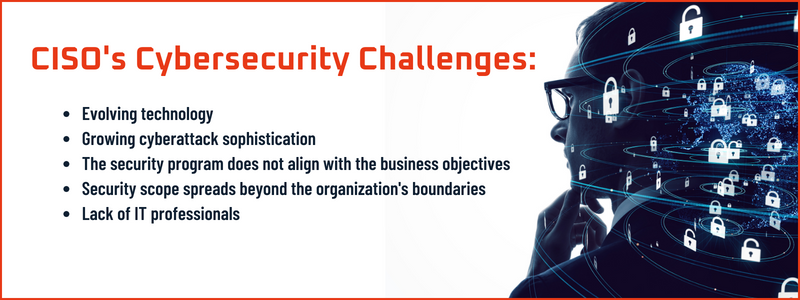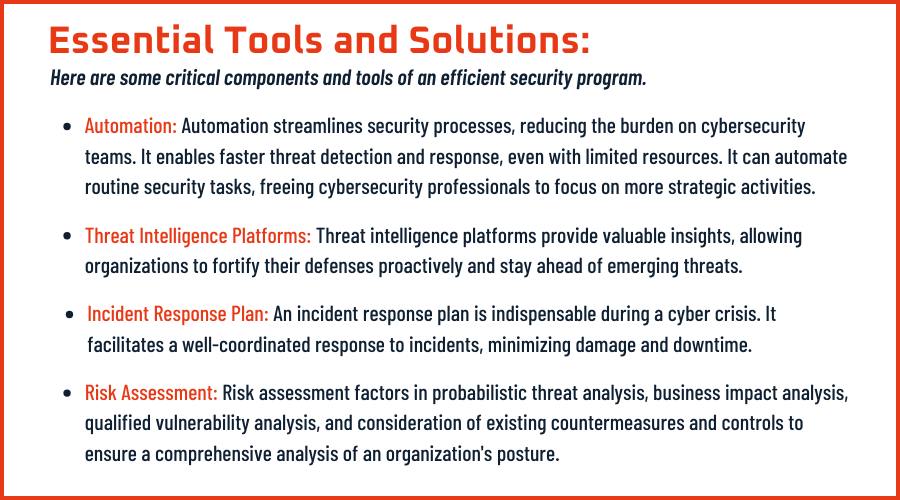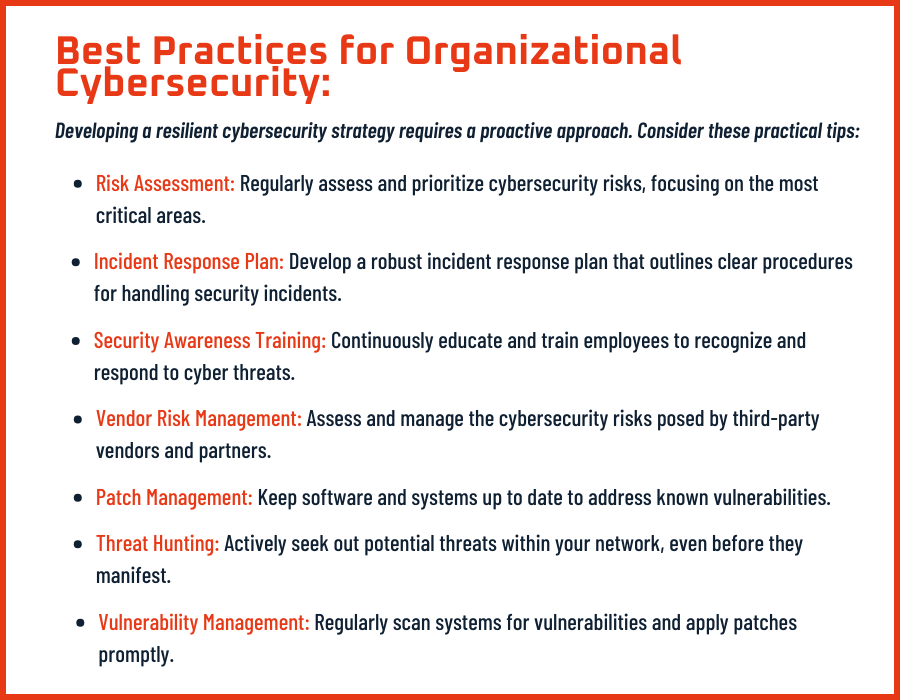Strengthening Cybersecurity Resilience in Uncertain Economic Times

Organizational Cybersecurity and Economic Impact
Organizational cybersecurity is not merely a safeguard or a rule book; it’s a strategic imperative in any organization’s growth and continuity plan. The effect of economic conditions on an organization’s cybersecurity strategy cannot be overstated. It’s essential to understand how economic factors shape cybersecurity initiatives. Many challenges, like tightened budgets, fluctuating priorities, and resource constraints, can undermine an organization’s ability to protect itself from cyber threats. These challenges can impact the very core of an organization’s digital defenses.
During economic changes, especially when there are concerns about the economic health of a nation or company, the company can become a target and we see an increase in cyber attacks. Some companies may decide to cut budgets and unfortunately this often hits every department across the board which includes cybersecurity. This is why it is so important to contextualize risks for a company so they are armed to make the right decisions. Today the controls are just as important as it is to be cyber resilient.
Importance of Leveraging Networks, Tools, and Partnerships in Enhancing Cybersecurity
Organizations must leverage three critical pillars to fortify cybersecurity resilience: networks, tools, and partnerships. These elements are the foundation for enhancing cybersecurity, especially in an uncertain landscape.
Organizations must engage in strategic planning and in-depth risk assessments. A proactive approach enables organizations to identify potential threats and vulnerabilities, allowing them to develop a cybersecurity strategy that aligns with the evolving economic landscape and business objectives.
Leveraging Networks for Enhanced Cybersecurity
A. Benefits of Establishing Strong Internal Networks and Communication Channels
Cultivating robust internal networks and communication channels is akin to constructing sturdy castle walls. This infrastructure enables seamless information sharing and coordinated responses to potential threats, ensuring that all relevant stakeholders are on the same page in defending against cyber threats.
In practice, this means investing in secure communication platforms, implementing clear incident response protocols, and fostering a culture of information sharing within the organization. Strong internal networks facilitate swift responses, limiting the damage caused by cyberattacks.
B. The Role of Cross-Functional Collaboration
Cross-functional collaboration is not just a buzzword; it’s a cybersecurity necessity. Cyber threats often transcend departmental boundaries, requiring collaboration between IT, legal, HR, and other units. By working together, these teams can identify and mitigate cybersecurity risks that may span multiple facets of the organization.
Effective cross-functional collaboration involves regular meetings, sharing threat intelligence, and establishing clear communication channels. It ensures that cybersecurity measures are integrated into all aspects of the organization.
C. Highlighting the Importance of Employee Security Awareness Training
Your employees are the organization’s first line of defense against cyber threats. Educating and raising awareness among employees is a critical component of a robust cybersecurity strategy.
Implementing comprehensive training programs, phishing simulations, and continuous awareness campaigns can help employees recognize and report potential threats promptly. Well-informed and vigilant employees significantly enhance the organization’s overall cybersecurity posture.
Utilizing Tools & Solutions for Effective Cybersecurity Management
The Role of Technology in Strengthening Cybersecurity Defenses
Technology is the cornerstone of modern cybersecurity defenses. Organizations must stay on top of the latest cybersecurity technologies to protect against evolving threats.
This includes deploying next-generation firewalls, advanced threat detection systems, and endpoint security solutions. Leveraging the power of artificial intelligence and machine learning can help organizations identify and respond to threats in real time, even in the face of budget constraints.

The Power of Partnerships in Cybersecurity
Strategic partnerships with cybersecurity vendors and service providers offer organizations access to specialized expertise and resources that may not be available or hard to obtain in-house. These partnerships can provide a competitive edge in the battle against cyber threats.
Benefits include early access to threat intelligence, advanced cybersecurity tools, and tailored support services. By tapping into these resources, organizations can strengthen their cybersecurity defenses, even when facing economic constraints.
When companies are going through due diligence to select a partner to assist in maturing their cybersecurity program, they need to partner with a company that will be a true partner. A true partner is a company that can help you quantify and contextualize risks identified. It is a company that understands the market you are in and the impacts to that market both from a regulatory and attack perspective. When companies partner with VerSprite, we help them put risks into perspective relative to their business and build a program based on the company’s risk appetite and the market segment they are in.
At VerSprite, we don’t just assist in identifying risks. We go beyond assessments and help companies improve their preparedness and incident response, as well as mitigate potential threats. A good partnership will see your organization through the entire process of strengthening and building your security program.

Regular Risk Assessments and IR Tabletop Exercises: Is It Worth the Effort?
Regular risk assessments, incident response plans, and tabletop exercises are not merely administrative tasks; they are the foundation of effective cybersecurity preparedness. These activities help organizations identify weaknesses, refine incident response procedures and plans, and ensure readiness for potential cyber incidents.
As the regulatory landscape changes, we have to change our approach to cybersecurity as well. For many years the focus has been to choose a framework, evaluate a company against the controls identified in the framework and build a roadmap based on the controls you need to implement. Now, we have to take into consideration a framework that closely aligns with the company’s market, but equally important is how resilient the company is to a cyber attack. Resiliency is key to success today in the cyber world.
Resilience comes from multiple perspectives. Within the corporate landscape, it requires a comprehensive approach. It encompasses the establishment of robust controls that not only align with regulatory requirements but also factor in a company’s capacity to navigate a cyber attack and expedite incident response effectively.
Traditionally, the primary emphasis was on preventing cyber attacks, a priority that should remain unchanged. However, it’s equally important to assess an organization’s capability to remediate an attack and evaluate the overall resilience when confronted with a cyber threat. The ability to quickly detect, respond, and recover from a cyber attack is integral to a company’s ability to maintain operational continuity, safeguard sensitive data, and uphold customer trust.
Resiliency is dual; it includes both prevention and remediation. By acknowledging and addressing both factors, businesses can better position themselves to not only withstand the evolving threat landscape but also demonstrate their commitment to the security and stability of their operations in the eyes of stakeholders and regulatory bodies.
Summary
The role of CISOs and cybersecurity professionals is paramount, particularly during these uncertain economic times. Organizations can confidently navigate these challenges by recognizing and addressing the unique challenges, leveraging networks, deploying cutting-edge tools, nurturing strategic partnerships, and implementing the industry’s best practices. Cybersecurity resilience is the key to safeguarding digital assets in an ever-changing world. The security of your organization and digital assets are the ultimate ROI.
Incorporating these strategies and principles into your cybersecurity approach will not only enhance your organization’s ability to withstand cyber threats but also position it to thrive.
Key Takeaways:
- Strategic Planning: Develop a cybersecurity strategy that aligns with your organization’s evolving objectives, considering the unique risks posed by economic uncertainty.
- Cross-Functional Collaboration: Foster collaboration among different departments within your organization to create a united front against cyber threats.
- Employee Education: Prioritize ongoing security awareness training programs to empower your workforce to effectively identify and respond to threats.
- Technology Investment: Allocate resources to invest in cutting-edge cybersecurity technologies and tools that automate processes, provide threat intelligence, and facilitate incident response.
- Partnerships: Explore strategic partnerships with cybersecurity vendors, service providers, and industry peers to access specialized resources, tools, and expertise outside the organization’s budget.
- Best Practices: Implement best practices such as continuous monitoring, risk assessments, and incident response plans, tabletop exercises to maintain a proactive cybersecurity posture.
Cybersecurity is not a static endeavor; it’s a dynamic, ongoing process that demands proactiveness, vigilance, collaboration, and innovation.
- /
- /
- /
- /
- /
- /
- /
- /
- /
- /
- /
- /
- /
- /
- /
- /
- /
- /
- /
- /
- /
- /